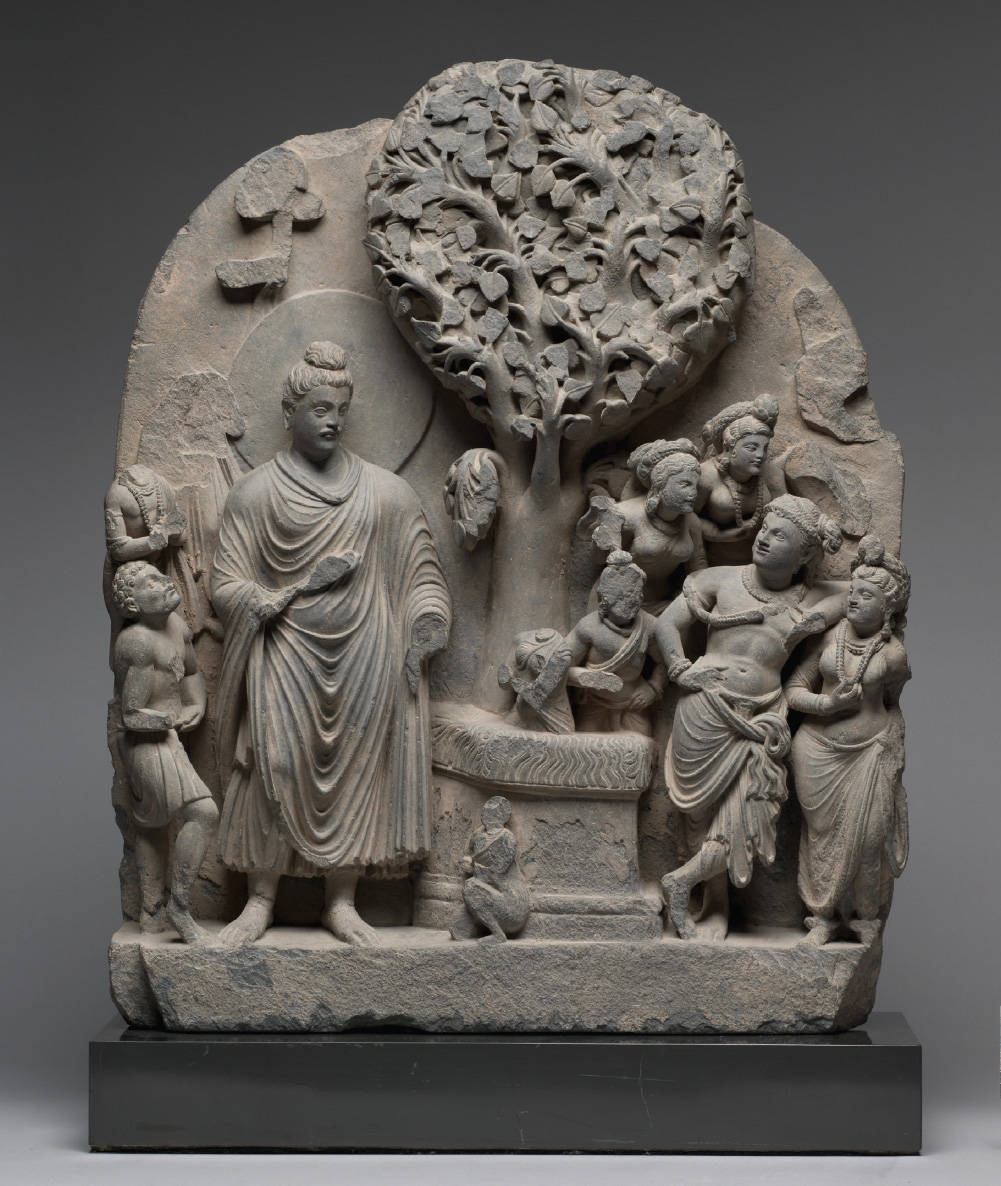Visual Source 4.2
A Gandhara Buddha
By the first century C.E., the impulse to depict the Buddha in human form had surfaced, with some of the earliest examples coming from the region of South Asia known as Gandhara in what is now northern Pakistan and eastern Afghanistan (see Map 3.3).That area had been a part of the empire of Alexander the Great and his Hellenistic successors from about 322 B.C.E. to 50 B.C.E. and had developed commercial ties to the Roman Empire as well. These early images of the Buddha reflect this Greco-Roman influence, depicting him with a face similar to that of the Greek god Apollo, dressed in a Roman-style toga, and with curly hair characteristic of the Mediterranean region.
Visual Source 4.2, from India of the second or third century C.E., depicts in Gandhara style a famous scene from the life of the Buddha—his temptation by the demon Mara and Mara’s seductive daughters while meditating under the Bodhi tree.

Question
How are Mara and his daughters, shown on the right, portrayed in this relief?
Question
What attitude characterizes the Buddha, shown on the left and surrounded by attendants?
Question
Why might Greco-Roman cultural influence have stimulated physical representations of the Buddha?
Question
What larger meaning might the Buddha’s followers take from this story?